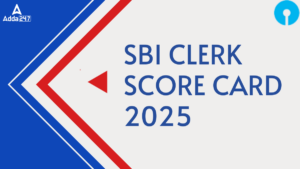Reasoning Ability is an onerous section. With the increasing complexity of questions, it becomes hard for one to give it the cold shoulder. The only way to make the grade in this particular section in the forthcoming banking exams like IBPS Clerk Prelims is to practice continuously with all your heart and soul. And, to let you practice with the best of the latest pattern questions, here is the Adda247 Reasoning Quiz based on the exact same pattern of questions that are being asked in the exams.
Watch Video Solution
Directions (1-5): Study the following information carefully and answer the given questions:
A, B, C, D, E, F, G, and H are sitting around the circular table They represent different teams i.e. M, N, O, P, Q, R, S, T. Only one person sits between B and A, neither of them is an immediate neighbor of F and neither of them represents P. The one, who represents O sits 2nd to the right of the one, who is immediate right of C. B sits 3rd to the left of the one who represents Q. The one who represents P sits 2nd right to F. G and E are immediate neighbors of the one who represents M. B does not sit opposite to the one who represents N. The one who represents R sits immediate right of the one who represents S. H represents Q. C represents S and sits opposite to F. G and the one who represents T sit opposite to each other. H sits opposite to the one who represents P.
Q1. Who among the following represents M?
Q2. Who among the following sits immediate left of the one who is 2nd left of E?
Q3. Who sits opposite to A?
Q4. Which of the following team is represented by B?
Q5. Which of the following combinations is true?
Directions: (6-7) Study the following information carefully and answer the questions which follow–
‘A – B’ means ‘A is brother of B’
‘A × B’ means ‘A is father of B’
‘A = B’ means ‘A is mother of B’
‘A + B’ means ‘A is sister of B’
‘A ÷ B’ means ‘A is husband of B’
Q6. ‘A is niece of B’ which of the following expression support the given relation?
Q7. In expression ‘W = A – N ÷ O = S + X’, how is W related to X?
Q8. In a family of 6 members J, K, C, P, Q and R. R, father of K is elder than P. J is younger than only three members of the family. Q, wife of K is elder than C, who is not the youngest. P is second eldest. Who is third eldest among them?
Q is third eldest among them.
Directions (9–11): Read the following information carefully and answer the questions given below:
P is son of U’s father’s sister. R is son of S, who is the mother of T and grandmother of U. V is the father of W and grandfather of P. S is wife of V.T is sister of R.
Q9. How is P related to S?
Q10. How is R related to P?
Q11. How is T related to W?
Directions (12-15): The following questions are based on the five three – digit numbers given below:
862 359 543 618 467
Q12. If 3 is added to the second digit of each of the numbers how many numbers thus formed will be divisible by three?
Q13. If all the digits in each of the numbers are arranged in descending order within the number, which of the following will be the highest number in the new arrangement of numbers ?
Q14. What will be the resultant number if the second digit of the second lowest number is divided by the third digit of the highest number?
Q15. If 3 is added to the first digit and 1 is added to the last digit of each of the numbers then which of the following numbers will be the second highest number?






 GA Capsule for SBI Clerk Mains 2025, Dow...
GA Capsule for SBI Clerk Mains 2025, Dow...
 The Hindu Review October 2022: Download ...
The Hindu Review October 2022: Download ...
 SBI Clerk Prelims Score Card 2025 Out, C...
SBI Clerk Prelims Score Card 2025 Out, C...







